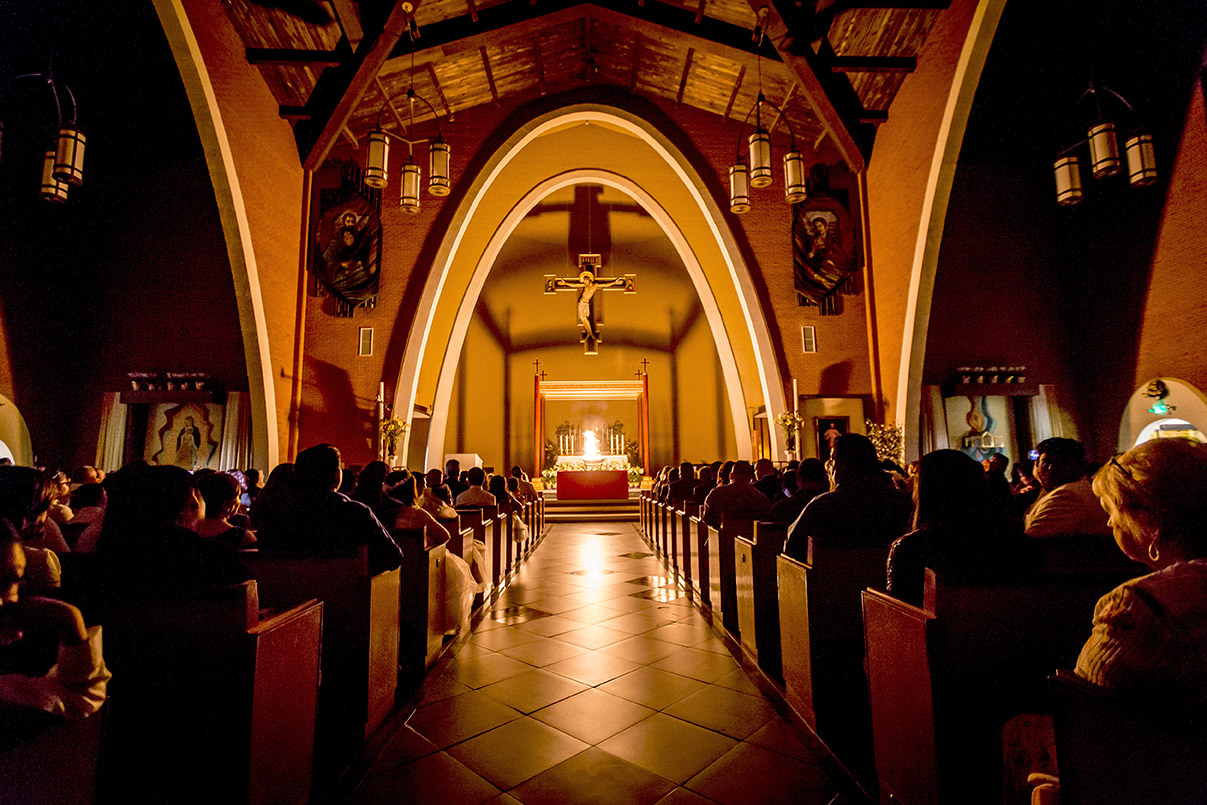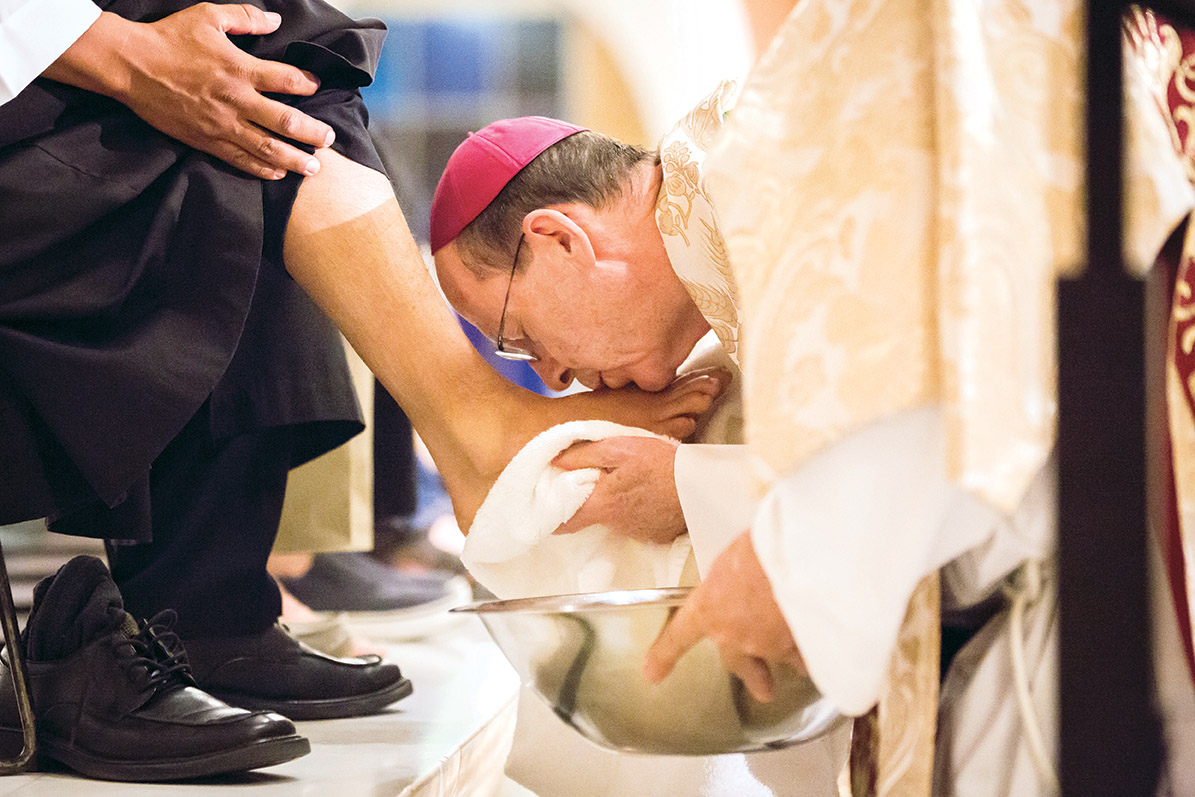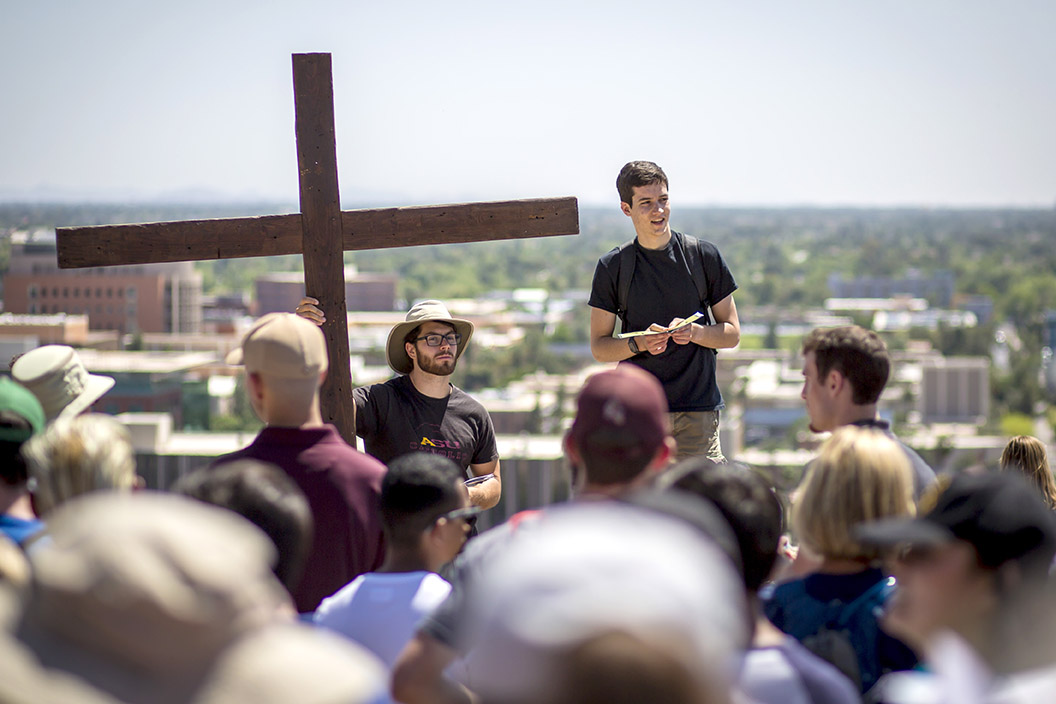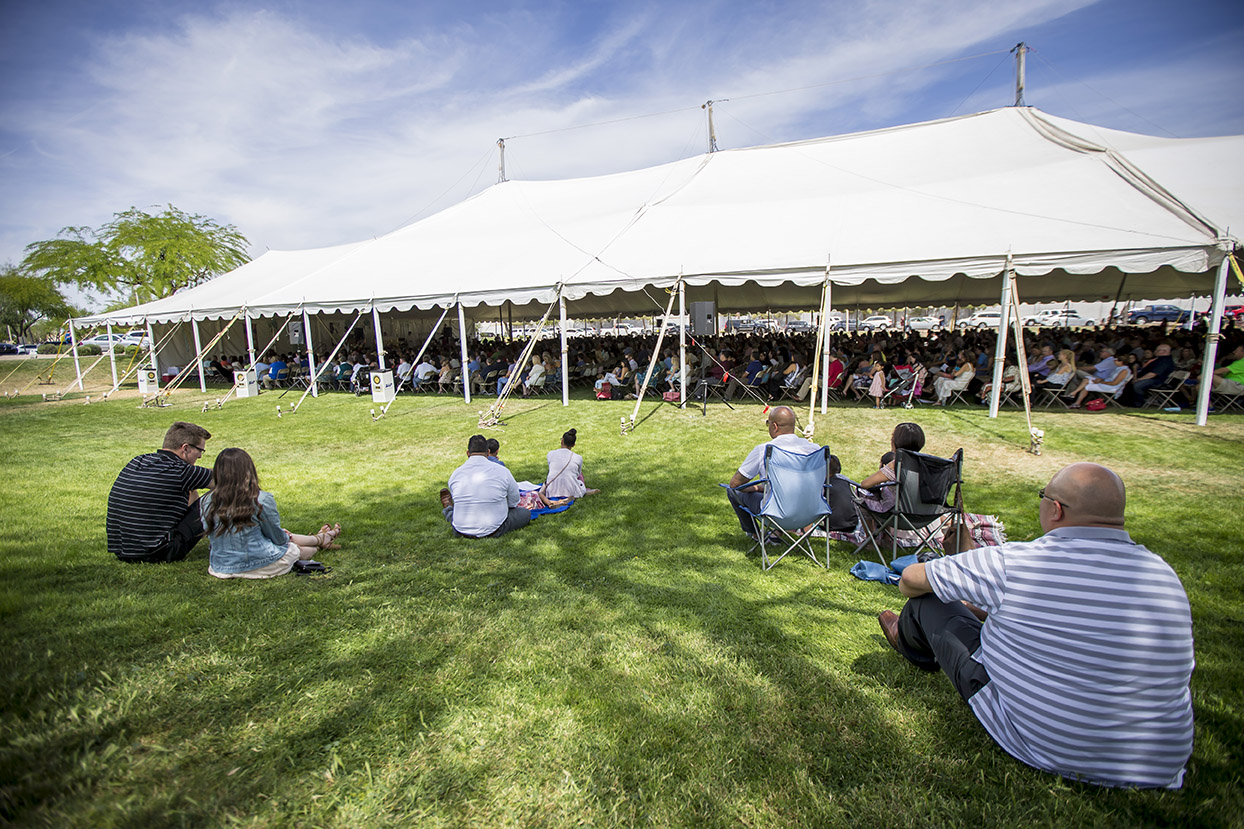
When Fr. John Parks was praying before the Eucharist several months ago, a prayer welled up inside him.
“Wow — He rose from the dead,” Fr. Parks said. “We’ve heard it so often you can forget that it happened. This is a reality.”
Easter — the holiest day of the year — celebrates Jesus’ Resurrection from the dead and promise of eternal life. Each year parishes lead the faithful through the season of Lent, which points toward birth to new life in Jesus; He conquered sin by His death on the cross and He conquered death by His resurrection. It’s a truth so significant that the Church celebrates the Easter Season for 50 days after, culminating in Pentecost.
Fr. Parks said, “something explosive happened in first century Judaism,” and that something was God fulfilling His covenant through the Passover meal.
Passover — one of the most important times of celebration and remembrance in the Jewish religion — remembers and celebrates the time when God freed the Jews from slavery in ancient Egypt. The meal is in memory of God’s covenant with Moses and the Jews who inherited the land of Israel. It was this meal Jesus celebrated with his apostles on Holy Thursday.

Mass celebrated on Holy Thursday is the official end of the Lenten season, and the beginning of the Triduum; the holiest three days of the year where the faithful wait, watch and pray. Msgr. Peter Bui, pastor of Holy Spirit Church in Tempe who also serves as theological consultant to the bishops, said the Paschal meal celebrated the night before Jesus’ death with His disciples is the new covenant celebrated by His followers until He comes again.
“Jesus Christ is the Lamb who is being sacrificed for us. Jesus instituted the Eucharist, and it is through the Eucharist He remains with us,” Msgr. Bui said. “The bread and wine offered by us humans — He, Himself — turns into the Body and Blood and with our sacrifice, He offers up to the Father for our spiritual blessings, for our benefit.”
Jesus’ death on Good Friday makes eternal life possible. Matthew’s Gospel brings out its meaning: the veil of the sanctuary is torn in two and all people have access to God through Jesus; the earthquake is a sign that the reign of God is beginning; the profession of faith by the centurion is a sign of the Gentiles becoming disciples of Jesus; and the rising of the dead shows that the death of Jesus is life-giving (Matt 27: 51-54). That’s a theme Bishop Thomas J. Olmsted touched on in his homily for Easter Vigil at Ss. Simon and Jude Cathedral April 15.
“In this way, the destructive dynamics of human history were changed forever. Instead of vengeance and violence determining human relations, mercy and justice determined them. Instead of the guilty paying for their transgressions, Jesus Himself made the payment with the offering of His own Blood as a perfect sacrifice pleasing to the Father,” Bishop Olmsted said.
“The world’s way of dealing with injustice was turned upside down by Jesus,” he added. “Rather than meeting aggression with still greater aggression, rather than demanding an eye for an eye and a tooth for a tooth, He says, ‘Father, forgive them for they know not what they do.’”

The Church of the Holy Sepulchre in Jerusalem is the place of both the crucifixion and the tomb of Jesus. Although Dr. Nancy Serwint has previously been to the Holy Land, a trip two years ago left an impression during her pilgrimage.
“As we made our way to the Holy Sepulchre there was this crush — a wonderful conflation of different faiths — and it was incredibly deep and you could absolutely feel it,” she said.
The associate professor of ancient art and archaeology at Arizona State University said the best part was “the golden lights of Jerusalem reflecting off the ancient stone walls.”
Msgr. Bui also witnessed the rays of light emanating from the stone and called his Holy Land visit “life-changing.”
“When you read the Gospels after being to the Holy Land, you don’t read them the same way,” Msgr. Bui said, “it changes you. And now when I do the Stations of the Cross I can picture the place in my mind.”

Holy Saturday ends the Triduum with the ringing of church bells, singing of “Alleluia” and the initiation of those joining the Catholic Church during the Easter Vigil, which St. Augustine described as “the mother of all vigils.”
The seven Old Testament readings from the Easter Vigil recount Salvation History, tying in the words of the prophets with the salvific act of Jesus.
“All this is what we celebrate tonight: all the many wonders God has done from the creation of the world to its re-creation and redemption in Christ,” Bishop Olmsted said in his homily. “We celebrate the many miracles that He continues to perform now and until the end of time.”
It also ushers in the 50 days of Easter that continues proclaiming that the Resurrection of Jesus is the foundation of the Christian life through hope, prayer and faith.
“We no longer have to face our difficulties suffering alone because the Lord has suffered with us,” Msgr. Bui said. “We should have a spring in our step because there is meaning in our sufferings, there is meaning when we are weighted by the cross we carry; there is something much more precious and wonderful to look forward to.”






